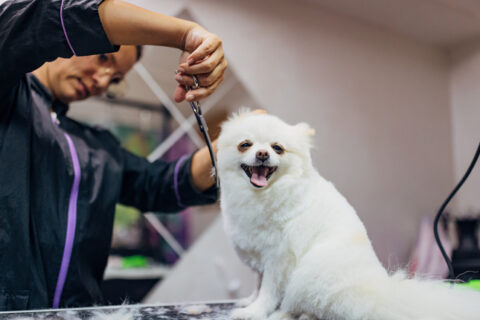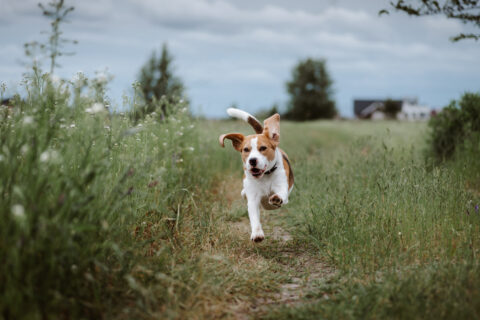How to Keep Dogs Warm in the Winter
In the winter when the temperatures drop and snow is more frequent, you may wonder how to keep your dog warm. Yes, they have fur coats. But is that enough? Especially for dogs that have short hair like chihuahuas, pugs, or dachshunds. What about keeping their toes, feet, and face warm?
It turns out that cold weather can be just as dangerous to dogs as extremely hot weather in the summer. Like humans, dogs can handle varying levels of weather to a specific degree. Different factors impact how well a dog can handle weather such as its breed, age, activeness, coat density, acclimation, and overall health. It takes between one week to two months for healthy dogs to adjust to extreme differences in temperatures. Let’s take a look at different factors that impact a dog’s ability to stay warm.
How Do Dogs Stay Warm?
The most obvious way that dogs stay warm is through their fur coats which provide a natural warm blanket on their bodies. Many breeds have the ability to make their hair stand up on end which blocks the cold air from touching their skin. In extreme temperatures, dogs can store fat in their bodies to provide energy and temporarily reduce their metabolic rate. This causes their body temperature to drop closer to the air temperature, which helps reduce the amount of heat loss. Larger breeds also have an improved ability to regulate their body temperature than smaller dogs.
What Do Dogs Do Best in Cold Weather?
Northern dog breeds naturally have dense, warm coats that are made to keep them warm in extremely cold temperatures. They also have furry paws that allow them to scale and travel on icy terrain. If you live in the mountains or colder locations, consider getting one of the following dogs for cold weather climates: Akita, Alaskan Malamute, American Eskimo Dog, Anatolian Shepherd, Bernese Mountain Dog, Chow Chow, German Shepherd, Greater Swiss Mountain Dog, Great Pyrenees, Karakachan Bear Dog, Keeshond, Kuvasz, Newfoundland, Norwegian Elkhound, Saint Bernard, Samoyed, Shiba Inu, Siberian Husky, Tibetan Mastiff, Tibetan Terrier.
What Dogs Struggle the Most in Cold Weather?
In general, dogs with short hair, no undercoat, and smaller breeds have a harder time staying warm in cold weather. Their lack of fur or size works against them in the winter. Their bellies are closer to the ground than taller dogs, allowing them to collect moisture and cold breezes easier. If you live in a cold climate, it may be best to avoid owning one of the following dog breeds: Chihuahua, Whippet, American Put Bull Terrier, Boston Terrier, Pug, French Bulldog, Greyhound, Boxer, Great Dane, Chinese Crested, Xoloitzcuintli, Dachshund, Basenji, Miniature Pinscher, Yorkshire Terrier, Vizsla, German Shorthaired Pointer.
Tips to Keep Your Dog Warm
If you have a short-haired dog, consider investing in a dog jacket or coat. Although this practice can seem silly or unnecessary, providing a second barrier for your dog to protect them from cold wind and weather can be very helpful for them! There are many options on the market, but it is important to buy one that is the appropriate size for your dog and your dog feels comfortable with it on.
Consider purchasing shoes or covers for dog paws if you walk your dogs often or take them outside frequently. Dog booties can protect your dog’s feet against frostbite and injuries from stepping on ice-melting chemicals or sharp ice. They can also provide traction for animals with mobility issues or when walking on a slippery surface.
Avoid letting your dog be outside for too long in weather lower than 32-degrees Fahrenheit. Just like people, dogs can get frostbite and hypothermia. Wet snow, slush, and freezing rain can easily penetrate a dog’s fur coat and make them very cold. Extended time in these circumstances can be dangerous. Keep your pet indoors in the winter and these colder temperatures.


